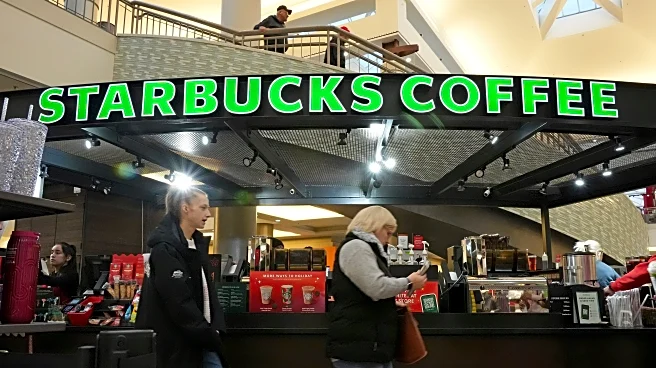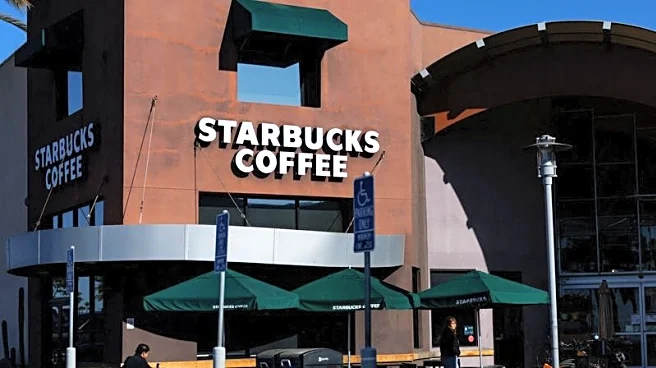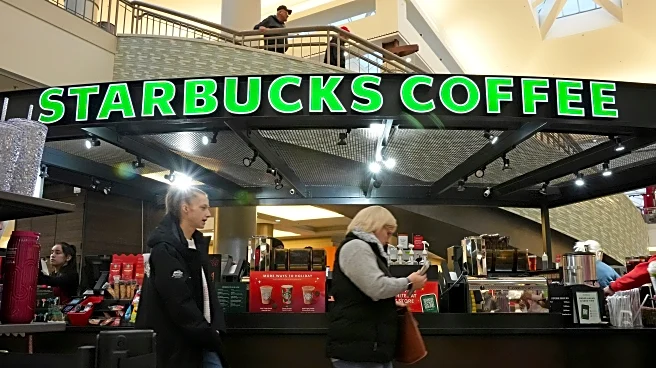What's Happening?
Starbucks has announced the closure of hundreds of stores across the U.S., Canada, and Europe, along with the layoff of 900 nonretail employees as part of a strategic turnaround plan. The Seattle-based coffee company will begin store closures immediately, offering severance packages and potential transfers to affected baristas. While the exact number of store closures remains unspecified, the majority are expected to occur in North America. Starbucks plans to end its fiscal year with 18,300 North American locations, a reduction from 18,734 as of June 29. The company will spend $1 billion on restructuring, including $150 million on employee separation benefits and $850 million related to store closures and lease exits. Starbucks Workers United, the labor group organizing workers, expressed concerns over the lack of input from baristas in the decision-making process.
Why It's Important?
The closure of Starbucks stores and layoffs represent a significant shift in the company's operational strategy, aiming to address financial instability and improve customer experience. This move could impact the coffeehouse industry, particularly in regions with high Starbucks presence, potentially affecting local economies and employment rates. The restructuring plan highlights the challenges faced by large retail chains in maintaining profitability amid changing consumer preferences and economic conditions. The decision also underscores the ongoing tension between Starbucks and unionized workers, which could influence future labor relations and negotiations within the company.
What's Next?
Starbucks plans to increase its North American store count in the next fiscal year and redesign over 1,000 locations to enhance customer experience. The company will continue to engage with union representatives to address concerns and negotiate terms for affected workers. As Starbucks navigates this transition, stakeholders will closely monitor the impact on employee morale, customer satisfaction, and financial performance. The broader retail industry may observe Starbucks' approach as a case study in managing large-scale operational changes.












